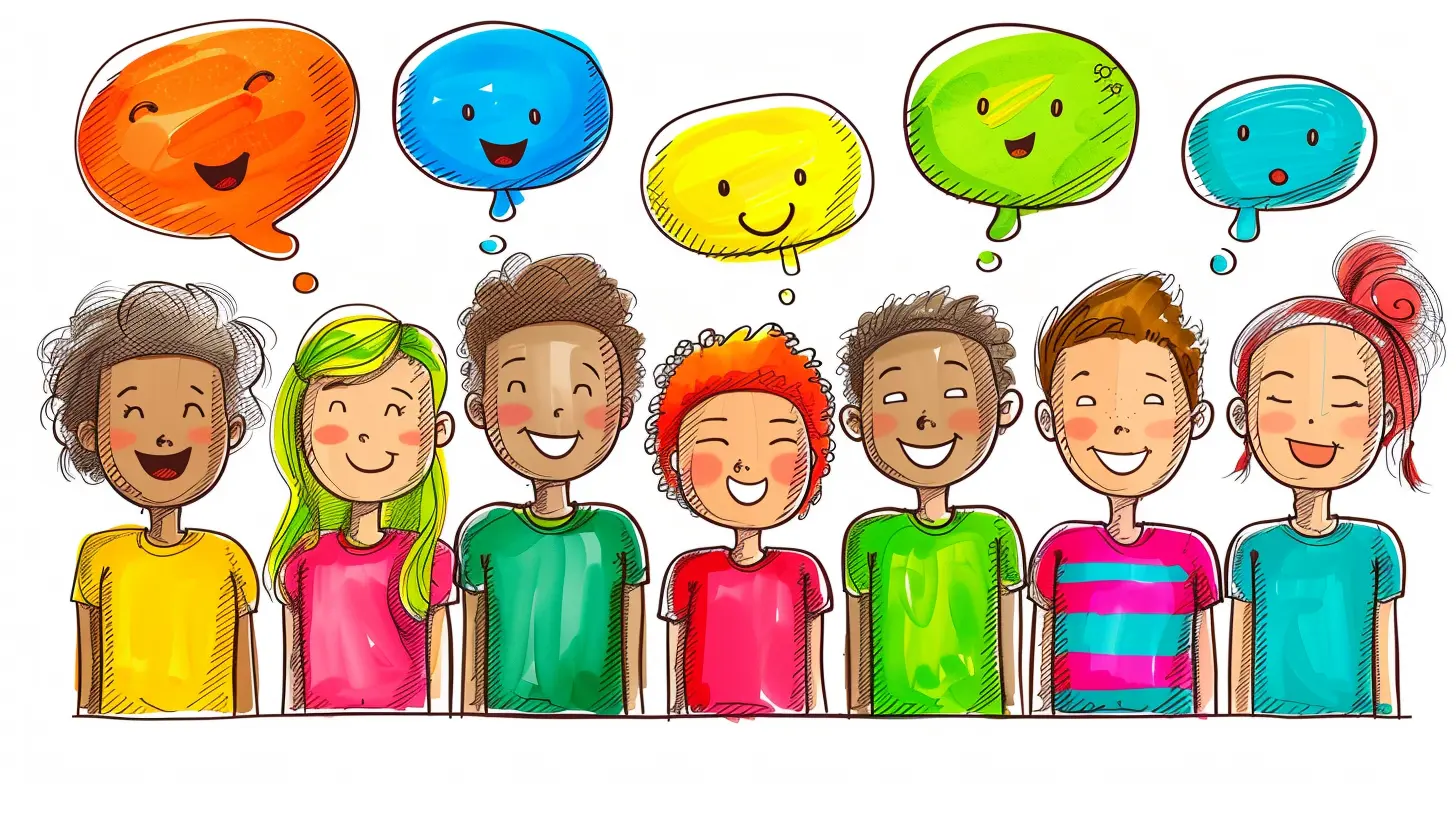The Science Behind Effective Group Discussions
6 April 2025
Group discussions are a staple in education, workplaces, and even casual social settings. Whether you're brainstorming ideas for a project, debating an issue, or collaborating on a task, the ability to communicate effectively within a group is a skill that can make or break success. But have you ever wondered why some discussions flow smoothly while others descend into chaos?
Well, there's actual science behind what makes group discussions work. From psychology to neuroscience, various fields help explain why some conversations lead to brilliant insights while others result in frustration. In this article, we'll break down the science behind effective group discussions, offering practical tips to ensure your conversations are productive and engaging.

The Psychology of Group Discussions
Group discussions tap into cognitive and social psychology, affecting how individuals interact and contribute. Understanding these psychological factors can help participants steer discussions in the right direction.1. The Power of Social Influence
Ever noticed how in any discussion, some people influence the conversation more than others? That’s social influence at play. The Social Influence Theory suggests that people tend to conform to the dominant opinions in a group, even when they disagree internally.To counteract this, a diverse group with varying viewpoints is ideal. Having a structured discussion format where everyone has a chance to speak can also prevent one or two voices from taking over.
2. Cognitive Load and Information Processing
Our brains can only handle so much information at once. If a discussion is too fast-paced or overloaded with complex details, some participants may disengage. When discussions become chaotic or overwhelming, the brain struggles to process and retain information—resulting in ineffective communication.To keep things productive, discussions should be structured:
- Break down complex topics
- Summarize key points regularly
- Encourage short, focused contributions
3. Groupthink: The Silent Killer of Creativity
When a group values harmony over critical thinking, groupthink takes over. This phenomenon occurs when people suppress dissenting opinions to avoid conflict, leading to poor decision-making.To avoid groupthink:
- Encourage open debate
- Assign a “devil’s advocate” to challenge ideas
- Welcome diverse perspectives

The Role of Communication Styles
How we communicate in group discussions plays a big role in shaping their success. Understanding different communication styles can help create a more productive environment.1. The Assertive Communicator
Assertive speakers express their thoughts and opinions clearly and confidently without being aggressive. They listen actively, respect others, and contribute constructively.Tips for assertive communication:
- Maintain eye contact
- Use clear and concise language
- Respectfully disagree when necessary
2. The Passive Communicator
Passive communicators avoid confrontation and may struggle to voice their opinions. While they may be great listeners, their hesitation can limit diverse input.Encouraging passive communicators to engage:
- Directly ask for their input
- Create a supportive, non-judgmental environment
- Allow written contributions to ease anxiety
3. The Dominant Communicator
Some individuals tend to dominate discussions, leaving little room for others to contribute. While confidence is great, overpowering others can stifle diverse viewpoints.Managing dominant participants:
- Set time limits for speaking
- Encourage equal participation
- Gently redirect the conversation when necessary

The Science of Effective Listening
Listening is just as important as speaking in any group discussion. But did you know that most people only retain about 25-50% of what they hear? Active listening can significantly improve group interactions.1. Active Listening Techniques
- Paraphrasing: Repeating what someone said in your own words to confirm understanding- Minimal Encouragers: Nodding, saying “I see” or “That makes sense” to keep the conversation flowing
- Asking Clarifying Questions: “Can you explain that point further?”
2. The Role of Nonverbal Cues
Nonverbal communication, like body language and facial expressions, plays a huge role in group discussions. Positive cues, such as nodding and maintaining eye contact, indicate engagement, while crossing arms or looking away can signal disinterest.
Decision-Making in Group Discussions
At the heart of any effective group conversation is decision-making. How do groups arrive at the best solutions?1. Consensus vs. Majority Rule
There are different ways for groups to reach decisions. Consensus decision-making ensures everyone agrees, creating stronger commitment from group members, while majority rule allows for faster decision-making but may leave some members dissatisfied.The key is finding the right balance between inclusivity and efficiency.
2. The Role of Critical Thinking
Good group discussions rely on members who think critically rather than just agreeing for the sake of it. Encourage deeper analysis with:- Open-ended questions
- Examining multiple perspectives
- Fact-checking statements before accepting them as truth
Group Size and Its Impact
The size of a group can have a major impact on how discussions unfold.- Small groups (3-5 people): Easier to manage, promotes deeper discussion
- Medium groups (6-10 people): More diverse ideas but requires strong moderation
- Large groups (10+ people): Greater risk of disengagement unless well-structured
For large groups, breaking into smaller sub-groups can improve participation and engagement.
The Role of Leadership in Group Discussions
A strong leader or moderator can mean the difference between a productive discussion and an unorganized mess.1. What Makes a Good Discussion Leader?
- Encourages participation from all members- Keeps the conversation focused on the topic
- Manages time effectively, ensuring all points are covered
- Resolves conflicts diplomatically
A good leader doesn’t dominate the discussion—they guide it.
Practical Tips for Better Group Discussions
Now that we've broken down the science of effective conversations, here are some actionable tips:1. Set Clear Objectives – Before starting, define the purpose of the discussion.
2. Establish Ground Rules – Encourage respect, time management, and full participation.
3. Encourage Diverse Opinions – More perspectives lead to better decision-making.
4. Use Technology Wisely – In virtual discussions, mute distractions and use shared documents for collaboration.
5. Summarize Key Points – Regular summaries help keep the conversation on track.
6. End with Actionable Steps – A discussion without action points is just talk.
Final Thoughts
Group discussions blend psychology, communication science, and decision-making strategies. Whether in a classroom, workplace, or casual setting, understanding the forces at play can enhance both individual and group performance.When discussions are structured, inclusive, and led with purpose, they don’t just generate ideas—they inspire action. So next time you're in a discussion, think about the science behind it and apply these strategies for more meaningful and productive conversations.
all images in this post were generated using AI tools
Category:
Communication SkillsAuthor:

Olivia Chapman
Discussion
rate this article
7 comments
Mary Monroe
This article piqued my interest! I’m curious about how different group dynamics influence the effectiveness of discussions. What role do individual personalities play in shaping group outcomes? Additionally, are there specific techniques or frameworks that can enhance engagement and productivity in these settings? Looking forward to exploring these ideas further!
May 5, 2025 at 3:18 AM

Olivia Chapman
I'm glad you found the article interesting! Individual personalities can significantly impact group dynamics, influencing communication styles and decision-making. Techniques like active listening, structured feedback, and established frameworks like the Delphi method can enhance engagement and productivity. I look forward to diving deeper into these concepts with you!
Phoebe McGrath
In the intricate dance of ideas, where voices intertwine, lies a hidden science that governs engagement and understanding. What if the secret to unlocking creativity and collaboration rests in the unspoken dynamics of group discussions? Dive deeper—there's more beneath the surface than meets the eye.
April 25, 2025 at 11:33 AM

Olivia Chapman
Absolutely! Unspoken dynamics, such as active listening and nonverbal cues, play a crucial role in fostering creativity and collaboration in group discussions. There's much to explore in how these elements enhance engagement and understanding.
Trixie Dorsey
Great insights on enhancing group discussions! Understanding the science behind communication really boosts collaboration. Can't wait to apply these tips in my next team project!
April 17, 2025 at 5:01 AM

Olivia Chapman
Thank you! I'm glad you found the insights helpful. Best of luck with your team project!
Abram Clarke
Great insights! Understanding the science behind group discussions can truly enhance collaboration and learning. Excited to explore how these principles can transform our conversations in educational settings!
April 15, 2025 at 8:51 PM

Olivia Chapman
Thank you! I'm glad you found the insights valuable. Excited for you to apply these principles in your discussions!
George Brown
This article insightfully explores the dynamics of group discussions, emphasizing the psychological principles that foster engagement and collaboration, ultimately enhancing critical thinking and collective problem-solving skills.
April 12, 2025 at 3:09 AM

Olivia Chapman
Thank you for your thoughtful comment! I'm glad you found the article valuable in highlighting the psychological principles that enhance group dynamics.
Emory Morgan
Great article! Understanding the science of group discussions can truly enhance collaboration and learning. Embracing diverse perspectives leads to richer conversations and more effective outcomes. Keep sharing insights!
April 10, 2025 at 9:02 PM

Olivia Chapman
Thank you for your kind words! I'm glad you found the insights valuable. Embracing diversity in discussions truly makes a difference!
Mila McVicker
Group discussions are like complex recipes: the right ingredients—diverse ideas, active listening, and clear communication—can create a delicious outcome. But without balance, it’s just a chaotic stew. Mastering this science can elevate dialogue from noise to meaningful exchange.
April 9, 2025 at 4:45 AM

Olivia Chapman
Thank you for the insightful analogy! You're absolutely right—balancing diverse perspectives with effective communication is key to transforming discussions into meaningful exchanges.
MORE POSTS

E-Learning for K-12: How to Keep Younger Learners Engaged

Lessons from the Crusades: Religion and Conflict

How to Use Found Objects in Art Lessons for Sustainability Awareness
From Pencils to Pixels: The Evolution of Art Tools in Education

The Role of Gamification in Virtual Learning Spaces

The Role of the Catholic Church in Medieval Europe